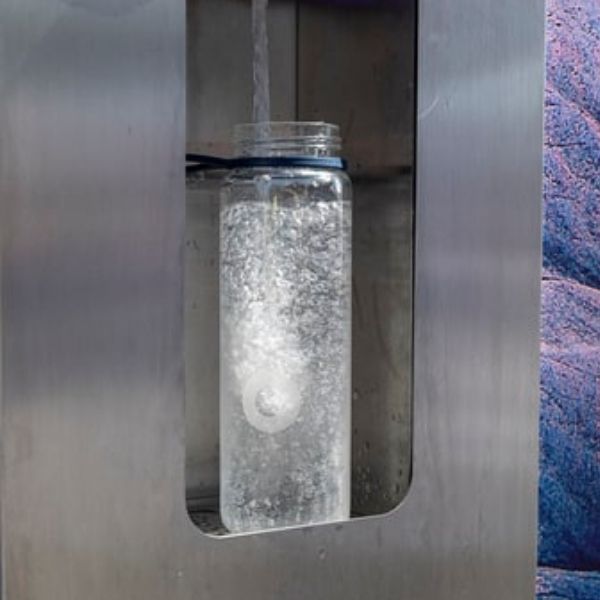4 Effective Ways of Removing Arsenic From The Drinking Water
Arsenic can contaminate drinking water via multiple routes. This arsenic in drinking water can be harmful to health. That is why you need to find methods to improve water quality. The following four strategies are highly effective for removing arsenic from drinking water.
Reverse Osmosis
If you want to get rid of 99% of arsenic in drinking water, an RO membrane is your best bet. Reverse osmosis systems filter contaminants by passing water through a semipermeable membrane. Heavy metals, charged particles, and suspended solids are unable to cross the membrane. Thus, it produces cleaner water at the other end.
Reverse osmosis is, so far, the most cost-effective and efficient process of arsenic removal. You do not need any chemical or high resources to maintain this system. You can install a Reverse osmosis membrane system above your kitchen sink and enjoy clean, contaminant-free drinking water.
Nanoparticles
You can treat water containing arsenic with nanoparticles to get rid of arsenic. These nanoparticles can quickly adsorb Arsenate ions on their surface. The best thing about nanoparticles is that they are chemically stable and non-toxic. They do not dissolve in the water. Moreover, you can reuse them again and again. You can use them up to their saturation point. After that, you can dispose of them properly.
Different types of nanoparticles are used for this process. For example, titanium bases nanoparticles adsorb Arsenite ions without any need for oxidation. Similarly, Zirconium oxide nanoparticles use a hydrothermal process for the removal.
Ion Exchange
An ion exchange unit replaces arsenic of water with a less hazardous ion like sodium, etc. Arsenate or arsenite are positively charged ions. So, the resin of this system is filled with potent anions ready to poach arsenic. When water passes through this resin, arsenic will be trapped, and clean water will pass through. Once the capacity of the resin is full, you need to regenerate the resin by removing trapped arsenic.
Activated Alumina
Resin or activated alumina is generally a medium of choice for removing magnesium and calcium ions from the water. But if the contact time of this filter media is increased, it can remove arsenic and fluoride as well. This type of filter media requires additional bleach or hydrogen peroxide assistance to convert the arsenic ions into adsorbable form.
What is Arsenic?
Arsenic is a metalloid that has hazardous effects on our health. But unfortunately, arsenic remains are present in our tap water, deeming it unusable. Its concentration is exceptionally high in certain states such as New Hampshire, Maine, Michigan, and the region in the northwest and the Rockies.
The icing on the cake is that you can not judge if a water source is contaminated or not without proper testing. It does not leave any particular taste or smell in the water. So, you must go for Arsenic testing at least once a year. If the amount is below ten PPb, you are good. But anything above this threshold should be concerning.

Source of Arsenic Contamination
Arsenic is a metalloid that occurs naturally in the Earth’s crust, but that amount is relatively low. Industrial and agricultural pollution is the main reason for the high level of arsenic in the soil. It seeps into the drinking water wells with rainwater.
According to a CDC report, various industries in the United States release thousands of tons of arsenic and other contaminants into the air. With the help of rainwater, snow, and gradual settling, this arsenic leaves the air and gets deposited on the Earth’s surface.
From there, arsenic ions slowly enter groundwater. Agricultural pollution accounts for high arsenic levels in most private wells.
The Symptoms & Danger of Consuming Inorganic Arsenic
Various health effects are posed by drinking arsenic-contaminated water. These include stomach pain, vomiting, diarrhea, nausea, skin discoloration, partial paralysis. If a human body constantly takes arsenic from drinking water, it can result in even more chronic symptoms. So, you must be vigilant about the water quality you consume every day.
Did you know arsenic high arsenic level also results in an increased risk of cancers and blindness? You should not take these health problems and dangers lightly and look for a method to eliminate arsenic from water. According to the World Health Organization, long-term exposure to arsenic can lead to various health risks, including skin lesions and cancer.
Its long-term exposure is also associated with various diseases of the heart and lungs. If a pregnant woman is consuming this hazardous chemical through food, air, or water, there is a high chance of cognitive disabilities in the child. It can even lead to the death of the embryo.
The WHO has declared it dangerous for public health. Constantly drinking contaminated water for more than five years can result in skin, lungs, and bladder cancers.
Does Water Filter Remove Arsenic?
Water containing more than ten μg/L of arsenic is highly harmful to your health. If your private well has this much arsenic, you need to look for the best water treatment method. Unfortunately, a standard carbon filter might not be enough to get rid of dissolved arsenic. You need to take extra measures. These measures include installing a water filtration system that is efficient in removing arsenic from water. For that purpose, RO membrane filters are the best. Best countertop RO system can remove any contaminant having more than 200 molecular weight.
Which Water Filters Are Used For Arsenic Removal?
There are millions of water filters in the market. Some of them can remove arsenic but only partially while others straight out can’t remove this ion at all. That is why we have made the search for the best arsenic water filter easier for you. Here are your choices:
Faucet Mounted Filter
These filters are perfect for removing contaminants like chlorine, arsenate and arsenite ions, lead, mercury, and other elements. Their low cost, compact style, and easy installation make them ideal for home usage. Multiple filtration stages of these filters successfully provide you with clean drinking water. They can remove contaminants as small as 0.5 microns in size.
Whole House Filtration
If you want a water treatment for the water supply of your whole house, these filters are the best. Without any extra cost, they will strain all the water entering your household with their robust 3 stage filtration technique. First is the sediment filter for large particles, 2nd is the reducing filter for ions and charged particles, while the 3rd is an activated carbon filter.

Water Filter Pitcher
It’s probably the most budget-friendly way to remove arsenic from the drinking water. Good water pitcher filters also remove 99% chlorine, VOCs, PFAS, pesticides, and bacteria from the water. Their overall filtration capacity is less than their alternatives but manageable for the daily use of a medium-sized family.
Counter Top Water Filters
As the name indicates, you can place these filters on your kitchen counter and enjoy quality water. They have multiple features for the removal of contaminants. Some feature a reverse osmosis membrane, while others do not. They have a 3 stage filtration process that ensures a 99.3% reduction of arsenic from the water.
FAQs on Removing Arsenic From Tap Water
How do I know if my house is contaminated with arsenic?
Without proper testing, you can not detect the presence of these ions in your water. They do not have any color, or do they have any distinct taste. The only way is to get your private well or surface water tested yearly.
Does boiling water remove arsenic?
No, boiling is not practical for the removal of this ion. In fact, in some situations, the concentration of these ions may even increase. When we boil water, some of it changes into vapor form and leaves the pot. These ions do not vaporize and stay behind. Now what you have is the same amount of ions in an even less quantity of water.
Does distillation remove arsenic?
Yes, distillers are very effective for the removal of arsenate and arsenite ions. The principle is the same as boiling. These distillers boil water and convert it into steam. The contaminants do not change into vapors and are left behind. The steam is then converted into the water again, which is pure from impurities.
Conclusion
According to the environmental protection agency, water with more than 10 PPB of arsenic is not safe for consumption. However, you can use it for other purposes. For example, watering plants, washing clothes, etc. That is why it is critical to learn how to remove arsenic from water. We hope our guide was helpful for you. Do you know any other method for the removal of this hazardous ion? Let us know in the comments down below.
